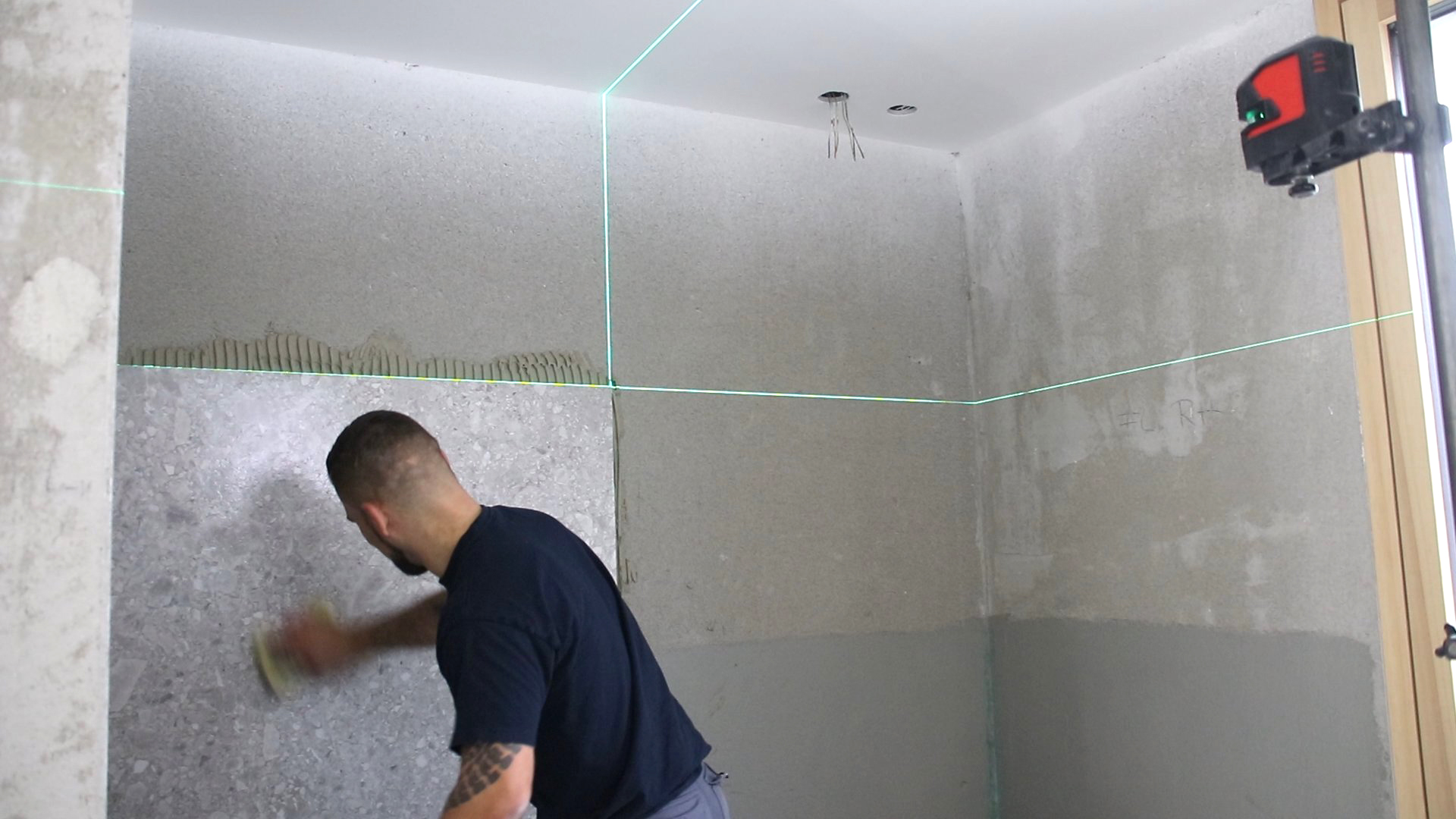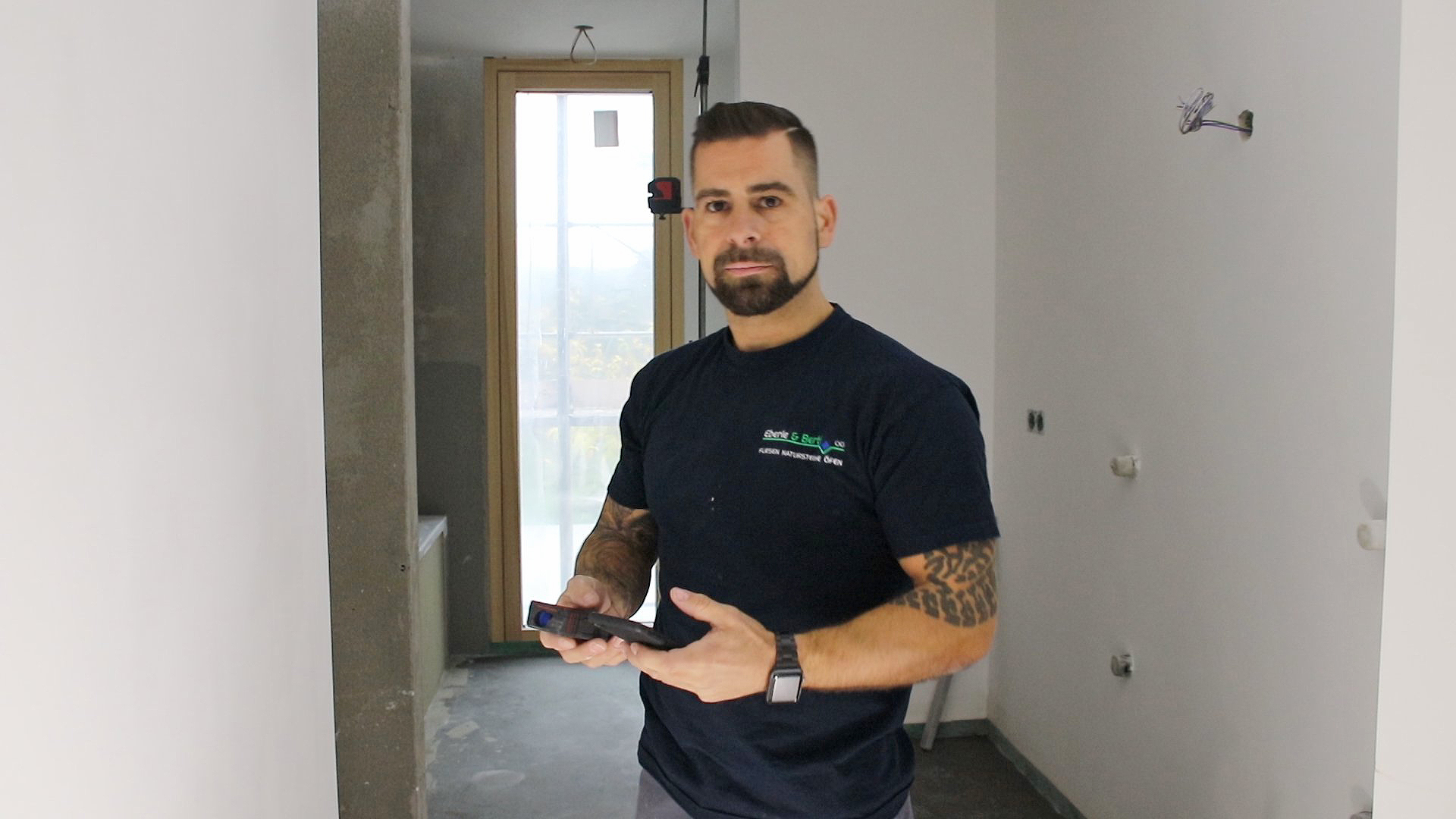07/26/2021
![]()
Alexander Berti has over 20 years of experience as a professional tiler. 13 years ago, he started his own business with his partner and the company Eberle & Berti was founded. Their main expertise lies in the field of installing floor and bathroom tiles, ranging from smaller rooms up to be entire wellness areas or swimming pools. Stone facades and masonry heaters are other areas they specialize in.
The sector the company operates in is constantly changing and developing. They keep up with trends and know what is possible. Seamless installations of large tiles and glass walls do not only look modern, but they are also easy to clean. However, this trend is rather challenging for tilers. A wall’s dimension has to be measured very accurately in order to ensure that large tiles are positioned in the best possible way and to avoid any large cuts. Additionally, large tiles are expensive and if mistakes happen, this often means that the tile can no longer be used. Besides this, installing the tiles on large walls isn’t easy, they must be positioned with the highest precision standards to give the desired, modern look.
Eberle & Berti have a lot of experience in this area and their attention to detail has helped them to overcome the challenges of these installations.
“We use Leica measuring devices, DISTO and Lino. They are as much a part of our tool kit as adhesive is... They make things easier for us,” explains Alex Berti.
The company has been working with Leica Geosystems’ products for a number of years and can no longer imagine working without them. They have developed and adopted to workflows that involve the use of laser distance meters and line lasers, which make their daily tasks much easier.

When Eberle & Berti receive the go ahead for a new installation, they always visit the site to take measurements and never just rely on existing blueprints. The DISTO Plan app in combination with the Leica DISTO X3 is used to take and document the needed measurements.
They chose the Leica DISTO X3 because it is small and easy to handle. Also, it has an IP65 (water spray and dust protection) rating and is shock-resistant - ideal for use on construction sites. If the device is dropped occasionally, it usually doesn’t cause any harm.
Alexander Berti’s measuring process follows this process: first, he visits the construction site, switches on the DISTO X3 and opens the DISTO Plan app on his mobile phone to pair the two devices. Then he opens the Smart Room function on the app, and he can start to take the needed measurements.
The new IMU sensor integrated in the DISTO X3 makes it easy to create floor plans, simply by measuring a room clockwise or counterclockwise. Once all the measurements are complete, the app automatically generates a floor plan. This is done by tracking each individual measurement and the angles between the measurements. If a height is measured, the app automatically identifies this measurement as the room height. The project, including the customer address, date, time and measurement table, can be sent to the office as a PDF file or as a CAD enabled 3D plan. This means that colleagues in the office receive a detailed plan of the actual room and the data can immediacy be processed.

“The app is really good for daily use. I am very pleased with it,” says Alex Berti in his short but sweet description of the app.
Eberle & Berti measure all longer distances with their DISTO, but also use it to check the angle information between walls, determine the size of an area or circumferences.

Once all main measurements of a project are complete, all detailed measurements, including details for smaller wall-openings, are recorded. This is also the point where the angles between walls are checked – for example, are the walls exactly at the right angle to one another as detailed in existing plans. This information is important as it impacts the installation of the tiles around a focus point, such as a bathtub.
At their current project, the chosen tiles measure 120 x 120 centimeters. The bathtub is the focus point of this bathroom installation and measurements to position the tiles correctly and to reduce waste from too many cuts are taken. Once the line laser’s horizontal and vertical laser lines are in the desired position, the DISTO is used to double check that the positioning is absolutely current. Once confirmed, it is marked where to start with the tile installations and all further tiles use the initial positioning as reference.

Alexander Berti currently uses the new L2P5G line laser. It is the perfect solution for his company as green laser lines are more visible to the human eye. This is great for working in large rooms or bright environments. During all their projects, the Lino operates continuously all day long. It is mainly used to align tile edges to one another, but also for joint edges, and screed and ceiling heights. All these installations are about the perfect horizontal and vertical alignment which makes a constant operation of the line laser essential. The li-ion batteries used in the Lino perfectly support this are they last an entire day.
I am really impressed by these lasers. We have used them for a long time, they are robust and last a long time. They have long lasting batteries and I am very satisfied. Precision, a quality Swiss product, it is obvious that they know what they do, says Alex Berti, ending the interview.

Alexander Berti, Managing Director of Eberle & Berti, Buch, Austria


